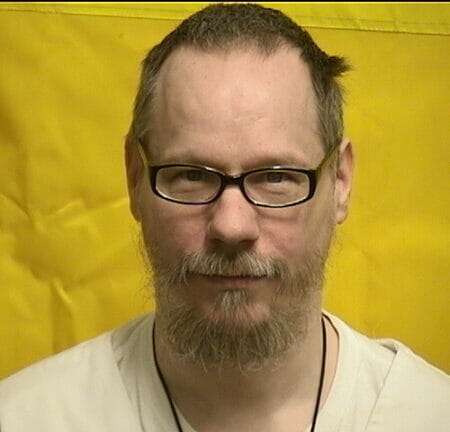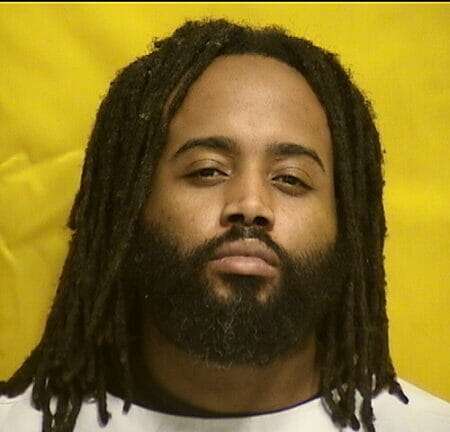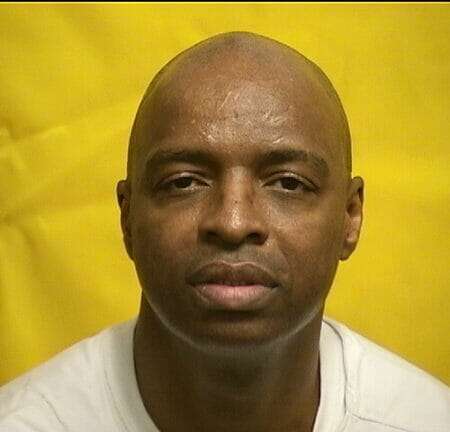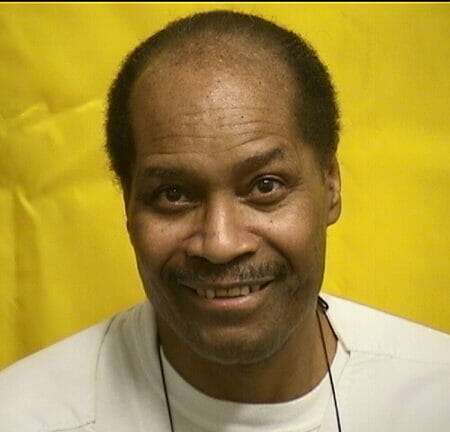
Stanley Jalowiec was sentenced to death by the State of Ohio for a brutal murder. According to court documents Stanley Jalowiec and two accomplices, Raymond and Danny Smith, would torture Ronald Lally in a Cleveland cemetery. Ronald Lally was due to testify against the Smith brothers in a drug trafficking trial. Ronald Lally would be beaten, shot, stabbed and ran over by a car. Stanley Jalowiec was arrested, convicted and sentenced to death.
Stanley Jalowiec 2021 Information
Number A321712
DOB 08/17/1970
Gender Male Race White
Admission Date 04/12/1996
Institution Chillicothe Correctional Institution
Status INCARCERATED
Stanley Jalowiec More News
On the morning of January 19, 1994, a partially clad male body was found in Woodland Cemetery in Cleveland. Two weeks later, the body was identified as that of Ronald Lally of Elyria. Over a year later, the grand jury indicted defendant-appellant, Stanley E. Jalowiec, for aggravated murder, with firearm and death-penalty specifications. The indictment alleged that Jalowiec purposely killed Lally to prevent him from testifying in criminal proceedings, which had been scheduled to begin on January 19, 1994. Subsequently, a jury found Jalowiec guilty as charged, and he was sentenced to death.
In June 1993, Ron Lally contacted the Elyria police to volunteer as a police informant. Lally signed an agreement to become a confidential informant for the Elyria police and agreed to make controlled drug buys. On June 7, 1993, with the assistance of Officer Scott Ashley and Detective Alan Leiby, Lally made a controlled drug buy of crack cocaine from Danny Smith and his father Raymond Smith while wired with a hidden monitoring device. As a result of the controlled buy, police arrested both Raymond Smith and Danny Smith in August 1993 and charged them with aggravated drug trafficking. Both cases were eventually set for trial on January 19, 1994.
On January 18, 1994, the evening before the murder, Brian Howington and Jalowiec went to several bars in downtown Elyria. (Howington knew Jalowiec because Jalowiec used to visit Howington’s aunt, Joann Corrine Fike, when Howington lived with her.) Jalowiec then asked Howington to accompany him to a friend’s house on Middle Avenue. There, Howington met Ron Lally and his roommate, and the four of them smoked crack cocaine. Around 11:30 p.m., Jalowiec, Howington, and Lally went to Fike’s house and “[s]hot pool, partied some more.”
About an hour later, Jalowiec got a page and asked Howington if he could borrow Fike’s car, a Chrysler LeBaron convertible. Though Howington was hesitant, he relented after Jalowiec persisted. Around 1:00 a.m., Jalowiec and Lally left Fike’s house in the LeBaron. The next time Howington saw the car was around 5:00 a.m. when Jalowiec and Raymond Smith returned it to Fike’s apartment. At that time, the car was covered with ice, and Jalowiec and Smith told Howington that the car had been washed. Fike testified that Jalowiec told her that he had washed the car because there was blood on it as a result of a fight he had had with someone at Mom’s Open Kitchen.
Sharon Hopkins testified that she was at Razzle’s bar in Elyria one night in January 1994 with her brother, Terry Hopkins, Raymond Smith, Danny Smith, Michael Smith (another son of Raymond), and several others, including Jalowiec. The group stayed at Razzle’s until it closed and then, without Jalowiec, went to eat at Mom’s Open Kitchen until around 2:45-3:00 a.m.
After leaving Mom’s, Sharon Hopkins rode in Danny Smith’s car with several people including Raymond, Danny, and Michael Smith. They traveled on Middle Avenue past the railroad tracks just outside the Elyria city limits and dropped Raymond and Michael Smith off by a wooded area. They drove back over the tracks and pulled into a parking lot. Approximately five to ten minutes later, a convertible drove over the tracks to where they had dropped off Raymond and Michael Smith. Danny Smith said, “That is it.”
Several minutes later, the convertible drove by again heading toward town, and Danny Smith’s car began to follow it. Shortly thereafter, Danny Smith signaled the convertible to pull over and ducked down in the front passenger seat while telling Sharon Hopkins to get out and ask the people in the convertible whether they had picked up Michael Smith. Sharon Hopkins saw Jalowiec get out of the driver’s seat of the convertible. Jalowiec responded that Michael Smith was in the car. Although Sharon Hopkins could not see the other occupants, she could tell that there were four people inside the convertible. Danny Smith then drove Sharon Hopkins home.
Later that morning, at around 3:30-4:00 a.m., Danny Smith arrived back at his apartment. Terry Hopkins arrived a little later and noticed that Danny Smith was “nervous and said he was feeling sick to his stomach.” Danny Smith told Hopkins that “they had done it, they did it.” Hopkins then went back to his sister’s apartment across the street from Danny Smith’s apartment. Later, Hopkins visited Danny Smith again and also saw Jalowiec, Raymond Smith, and Michael Smith. Jalowiec said, “They stomped him and ran him over with a car.” The others there indicated that “they shot him and cut him.” According to Hopkins, they were “[k]ind of like bragging about it.” Danny Smith told Hopkins they wanted this person killed because he had worn “a wire on him on a drug sale.”
At approximately 9:55 a.m. on January 19, 1994, Cleveland homicide detective Michael Beaman was summoned to Woodland Cemetery. A male body had been found on a cemetery roadway. Some of the victim’s clothing was nearby in a snow bank. There was no identification on or near the victim and police did not learn the identity of the victim, Lally, until a few weeks later.
Dr. Heather Raaf, a forensic pathologist with the Cuyahoga County Coroner’s Office, performed the autopsy on Lally. Dr. Raaf testified that teeth in Lally’s mouth had been knocked out by a gunshot. Dr. Raaf estimated that Lally had sustained at least eleven blows to his head and that his injuries were consistent with being stomped or struck by a vehicle several times. Dr. Raaf determined that Lally’s death resulted from a gunshot wound to the head and multiple blunt impacts to the head.
The drug trafficking cases against Danny and Raymond Smith were subsequently dismissed because Lally, the primary witness in both cases, was dead.
After an extensive police investigation, the grand jury indicted Jalowiec on March 8, 1995, for aggravated murder with a firearms specification. In addition, a death-penalty specification alleged that Jalowiec purposely killed Lally in order to prevent his testimony as a witness in a criminal proceeding.
At trial, the key witness for the prosecution was Michael Smith, son of Raymond Smith1 and brother of Danny Smith. Michael Smith contacted Detective Leiby in April 1994 because he was bothered about having witnessed the Lally murder. During Raymond Smith’s murder trial, Michael Smith had been unavailable to testify, and the prosecution proffered testimony from him that had been elicited in a deposition. State v. Smith (2000), 87 Ohio St.3d 424, 428, 721 N.E.2d 93, 102. However, at Jalowiec’s trial, Michael Smith testified as a prosecution witness.
Michael Smith testified that, purely by chance, he had met his father and brother at Mom’s Open Kitchen around 2:30 a.m. on the night of the murder. Raymond Smith had made a phone call and indicated to Michael Smith that he was going to leave. Michael agreed to go with his father and left with him and his brother, Danny Smith. The Smiths and Danny Smith’s girlfriend got in Danny Smith’s car and both Raymond and Michael Smith were dropped off on Middle Avenue. Raymond and Michael waited outside in the cold, even though Michael had no idea what they were waiting for. The LeBaron driven by Jalowiec with Lally as a passenger pulled up to them and stopped. Raymond Smith told Lally to get in the back seat, and Michael Smith got in the back seat on the driver’s side. Raymond Smith sat in the passenger side front seat and made introductions.
Shortly thereafter, Raymond Smith brandished a gun and told Lally, “Don’t make any sudden moves.” The group stopped to buy gas, beer, and cigarettes, then drove on Route 2 toward Cleveland. Raymond Smith asked Lally, “Why did you set my son up?” Lally denied doing so, but appeared to be scared. Smith then told Lally, “We are going to give you some money, get you a bus ticket, you are going to get out of town.”
During the trip into Cleveland, all four men were smoking crack cocaine. Lally agreed to leave town, and they drove to East Cleveland to buy some crack for Lally’s trip. However, they saw police cars and fire trucks in the neighborhood and decided to drive back towards downtown Cleveland. As they drove, Raymond Smith directed Jalowiec to pull the LeBaron into a Cleveland cemetery.
Inside the cemetery, Raymond Smith got out of the car, put the gun to Lally’s face, and ordered him out of the car. He then told Lally, “You will never snitch on nobody again.” Michael Smith heard a gunshot and then heard Lally exclaim: “You shot me in my head, you shot me in my head.” Raymond then told Michael and Jalowiec to get out and assist him. Jalowiec got out of the car, but Michael remained inside the car and did not look out. He heard “thumps like hitting” and heard Lally plead, “I won’t tell nobody, please don’t kill me, please don’t kill me.”
Michael Smith testified that after about two to five minutes of quiet, he could tell that the trunk had been opened and that his father and Jalowiec were trying to put something in the trunk. He heard someone say, “He ain’t going to fit, * * * he is too stiff,” then he heard something drop. Then Raymond Smith and Jalowiec got back in the car, and Jalowiec started the car and put it in reverse. According to Michael Smith, when Lally’s body stopped the car from going any further, Jalowiec drove forward a short distance and then put the car into reverse. Michael Smith could feel the car hit something. Jalowiec did this three times and then drove out of the cemetery.
As they drove from the cemetery, Raymond Smith began arguing with Michael Smith: “This is for your brother, why didn’t you get out and help?” While driving back to Elyria, Raymond took his gun apart and threw it out the window, piece by piece. Upon arriving in Elyria, they dropped Michael Smith off at Danny Smith’s apartment.
Linda Luke, a forensic serologist in the coroner’s office, conducted tests on stains found on the trunk liner of the Chrysler LeBaron. Luke testified that the DNA in Lally’s blood sample was consistent with the blood found on the trunk liner.
After deliberation, the jury found Jalowiec guilty as charged.








